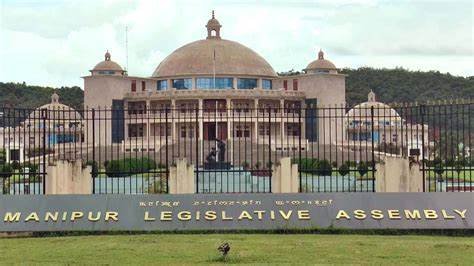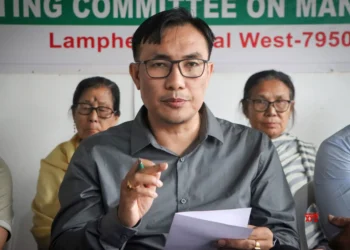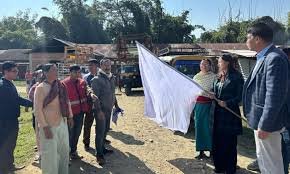Editor’s Note: As part of our ongoing commitment to serve as an advocacy platform for peace in Manipur, we continue to welcome “opinion” pieces from all communities. We encourage individuals to use this space to express their perspectives with sincerity and responsibility. We urge contributors to refrain from language that could be interpreted as inciting violence or hatred. In line with this initiative, we present a write-up by HS Benjamin Matep, Chairman of the Kuki Organisation for Human Rights Trust (KOHUR). Please mail your write-up at: novinkn@gmail.com. Thank you, Navin Upadhyay
By H.S. Benjamin Mate
The enactment of the Tenth Schedule of the Indian Constitution—commonly known as the anti-defection law—has significantly weakened the political agency of tribal representatives in Manipur. Prior to this law, tribal MLAs held substantial influence in state politics. Meitei Chief Ministers, in their effort to secure leadership and avoid potential no-confidence motions, were compelled to listen to tribal legislators and occasionally deliver on promises made to tribal constituencies. They also refrained from pushing policies overtly harmful to tribal interests, fearing political fallout.
However, the introduction of the anti-defection law changed this dynamic dramatically. Tribal legislators can no longer challenge, oppose, or bring down a government—even when it clearly acts against tribal rights and interests—without facing disqualification. This has rendered them politically impotent. As a result, many tribal MLAs have become subservient to Meitei-led governments, often aligning with the Chief Minister merely to secure limited development projects or personal political gains.
Beyond legislative politics, the Meitei community has extended its dominance by effectively controlling all major national political parties operating in Manipur. Tribal voices and issues are routinely suppressed or excluded from party platforms. State media—both electronic and print—is entirely owned and managed by the Meiteis, resulting in a media landscape where tribal issues are intentionally ignored, misrepresented, or buried.
Being the majority and more economically advanced community in the state, the Meiteis dominate not only the political arena but also the economy, media, bureaucracy, and academia. Even if all tribal MLAs united, they would still make up only one-third of the 60-member Manipur Legislative Assembly. The Meiteis hold 40 seats, representing just 10% of the state’s geographical area—the Imphal Valley—while tribal MLAs hold only 20 seats, despite representing over 90% of the state’s hilly and often inaccessible terrain.
The inequity goes further. In public employment, Meiteis benefit from both Scheduled Caste (SC) and Other Backward Class (OBC) quotas, amounting to around 70% of reservations, while the Scheduled Tribe (ST) quota for tribal communities is capped at just 30%, despite tribal communities constituting over 40% of Manipur’s population. Most educational institutions, universities, and healthcare facilities are concentrated in Meitei-dominated areas, leaving tribal regions underdeveloped and underserved.
 READ: Be Quick, Change Your Passwords: Biggest Password Breach in History Exposes 16 billion Credentials
READ: Be Quick, Change Your Passwords: Biggest Password Breach in History Exposes 16 billion Credentials
Even in resource allocation, disparities are stark. Local area development funds are allotted equally to Meitei and tribal MLAs, despite the vast difference in geographic scope and infrastructural challenges. Worse still, approximately 70% of the state’s budget is funneled into Meitei-dominated valley areas, while only 30% is allocated to the tribal hill districts—further entrenching inequality.
Given this persistent political, economic, and developmental discrimination, the future of tribal communities in Manipur is increasingly bleak. The present trajectory offers no space for equity, dignity, or progress for the tribal population.
 READ: Analysis: Record Spike in Swiss Bank Deposit Revives Talk of India’s Economic “Loot”
READ: Analysis: Record Spike in Swiss Bank Deposit Revives Talk of India’s Economic “Loot”
It is, therefore, imperative that the tribal communities of Manipur rise above internal divisions and unite for a common cause: to demand a separate state within the Indian Union. Only through such a political reimagination can the tribal people hope to live with equal rights, representation, and opportunity—free from systemic discrimination and suppression.













